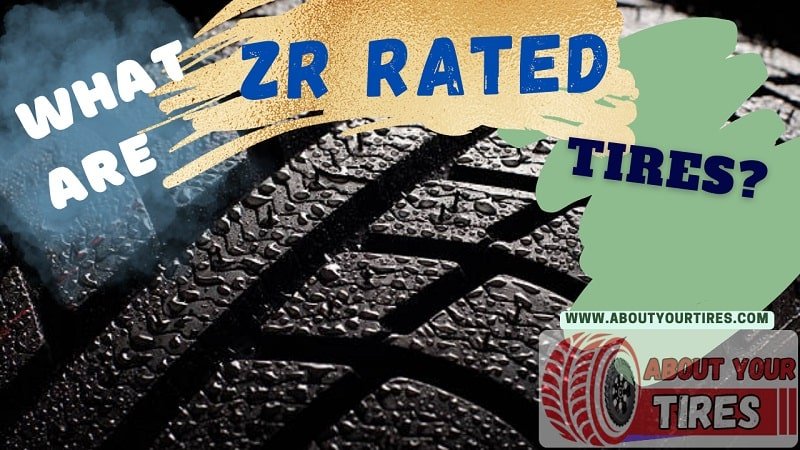Introduction
Understanding the complexities of tire sidewalls, especially deciphering speed ratings, can be puzzling. The emergence of the “ZR” rating adds a layer of intricacy to an already intricate subject. In this guide, we unravel the mysteries surrounding ZR-rated tires and what they signify. Hopefully we will be able to find that What Are ZR Rated Tires?
Demystifying ZR Rated Tires
Let’s start by comprehending the significance of ZR-rated tires and why they are causing confusion.
Unravelling ZR Ratings: A tire bearing the “ZR” rating essentially possesses a speed rating of Z. Additionally, this rating can further categorize into V, W, and Y ratings, each with its own speed capabilities. The “R” signifies the tire’s radial construction, unrelated to speed.
Making Sense of ZR Ratings: To gain insights into ZR tires’ performance, including their distinction from other tire types, explore the rest of this article.
Deciphering Z and ZR Tires
Discover the subtle differences between Z and ZR-rated tires, which often lead to perplexity.
The Z and ZR Connection: Surprisingly, the distinctions between these two ratings are minimal.
Varied Manufacturer Practices: The interpretation of speed ratings can vary among tire manufacturers. Understanding these nuances may necessitate reference to the manufacturer’s specifications.
Shared Speed Capabilities: In general, both Z and ZR-rated tires signify the capacity to exceed 149 mph. These categories encompass sub-ratings of V, W, and Y, all indicating speeds above 149 mph. The “R” designation pertains solely to radial tire construction.

Are ZR Tires Superior to R Tires?
Evaluate the trade-offs between ZR-rated and R-rated tires in terms of speed capabilities, durability, and pricing.
ZR Tires for Speed Enthusiasts: ZR-rated tires, with their high-speed capabilities exceeding 149 mph, are ideal for performance-oriented drivers.
Benefits of R Tires: R-rated tires, with a speed limit up to 106 mph, offer increased durability and longevity, making them an economical choice.
Consider Your Needs: The choice between ZR and R tires hinges on your driving habits and the speeds you intend to reach. Commuting may not necessitate ZR-rated tires.
See also When Your Tire Wobbles?
Decoding ZR 19 on a Tire
Interpreting a tire’s markings, including the “ZR 19,” can be perplexing. Here’s a breakdown of what it signifies.
Deciphering ZR 19: In the label “ZR 19,” the “Z” indicates a speed rating, signifying a tire capable of exceeding 186 mph. Sub-ratings may appear later on the sidewall, indicating speeds within the “Z” category.
Unravelling the “R”: The “R” simply denotes the tire’s radial construction, which is a common and efficient tire type.
Understanding the “19”: The number “19” denotes the diameter of the wheel rim, unrelated to speed.
Conclusion
In summary, ZR-rated tires share the same speed rating as Z-rated tires, with both signifying speeds beyond 149 mph. The “Z” rating contains subcategories like V, W, and Y, which also indicate high speeds. The “R” in ZR refers to the radial tire construction, adding no speed distinction. The labeling system’s complexity stems from the subcategory inclusion in the size area of the tire sidewall.
FAQ
Q1: Are ZR-rated tires suitable for everyday driving?
A1: ZR-rated tires are designed for high-performance vehicles and high-speed driving. For everyday commuting, they may offer more speed capability than necessary.
Q2: Can I use ZR-rated tires on a vehicle with a lower speed rating?
A2: It’s recommended to match your vehicle’s speed rating recommendations. Using These types of tires on a vehicle with a lower speed rating may affect handling and safety.
Q3: Are ZR-rated tires more expensive than R-rated tires?
A3: These tires tend to be pricier due to their high-performance capabilities and use in sports cars. R-rated tires, designed for lower speeds, are generally more affordable.
Q4: Do ZR-rated tires wear out faster than R-rated tires?
A4: These tires, designed for higher speeds, may wear out faster, while R-rated tires, meant for lower speeds, often offer greater durability and longevity.
Q5: What’s the significance of the “R” in these tires?
A5: The “R” signifies that the tire has a radial construction, which is a common tire type offering advantages like grip, comfort, and fuel efficiency. It doesn’t affect the tire’s speed rating.

